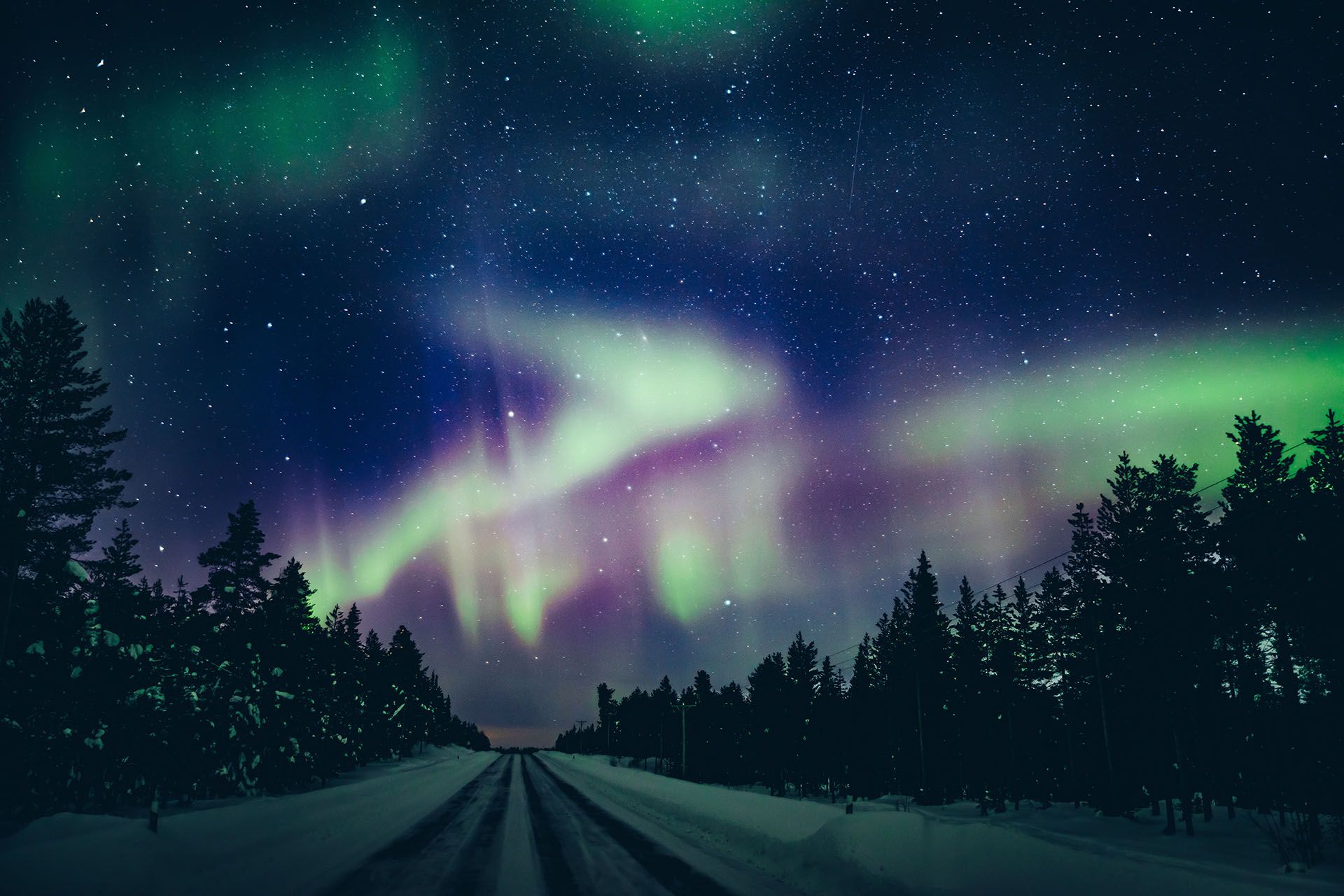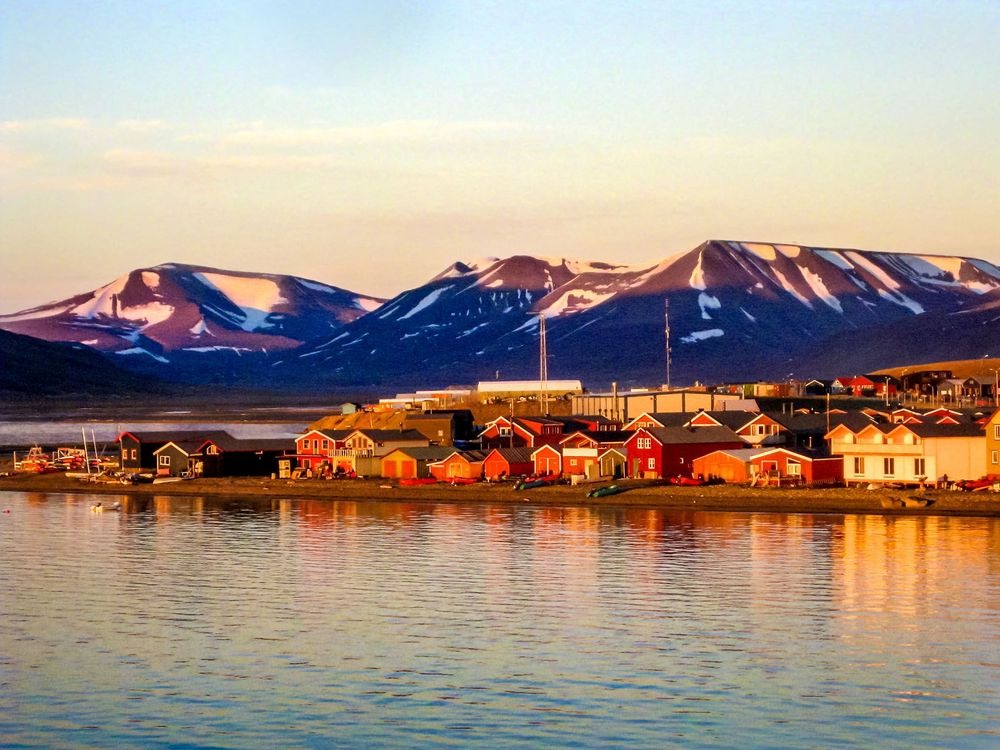Blog
Best things to do in Norway
1. Explore the beauty of Geirangerfjord
Shadowed by rearing mountains, the S-shaped Geirangerfjord is one of Norway’s most stunningly beautiful fjords. Any approach to Geiranger is spectacular.
Arriving by ferry reveals the village tucked away in a hollow at the eastern end of the fjord while approaching from the north by road involves thundering along a fearsome set of switchbacks on the Ørnevegen (‘Eagle Way’) for a first view of the village and the fjord glinting in the distance.
Enjoy a tour of Norway’s most picturesque locations including Ålesund, Hellesylt, Stranda, Sykkylven, Geirangerfjord, and Eidsdal.

2. Go to wildlife safaris in Svalbard
From polar-bear spotting to birdwatching to husky drives, the vast, glaciated landscapes of this gorgeous Arctic archipelago offer a spectacular range of wildlife safaris as well as a variety of other things to do in Norway.
Guided tours are big business in Svalbard and you can choose anything from hiking and snowmobiling to kayaking. Or try ice-caving, dog-sledging or boat trips. For those who wish to see wildlife, Zodiac offers boat and snowmobile safari trips. The most prized sighting of course is of the local polar bears. However, there there are all manner of other Arctic fauna too.
Or, try taking a trip to one of the former coal mines. Tours of glaciers — and glacier tunnels — are also popular.

3. Have a look at the intricate sculptures in Vigelandsparken
Before his death in 1943, Gustav Vigeland populated Oslo’s favourite park with his fantastical, phantasmagorical sculptures. It’s a literally fantastic concoction, medieval in spirit and complexity, and it was here that Vigeland had the chance to let his imagination run riot.
From the monumental wrought-iron gates on Kirkeveien, the central path takes you to the footbridge over the river and a world of frowning, fighting and posturing bronze figures – the local favourite is Sinnataggen (The Angry Child). Beyond, the central fountain is an enormous bowl representing the burden of life, supported by straining, sinewy bronze Goliaths.
Discover Oslo’s unique attractions and learn about the city’s history on a comprehensive guided tour. See panoramic views of the city from Holmenkollen Hill and learn about Gustav Vigeland.

4. Take a train ride on the Flåmsbana
A ride on the Flåm railway from high up in the mountains to the fjords way down below is one of the most dramatic train journeys in the world and one of the best things to do in Norway.
The lonely railway junction of Myrdal, just forty minutes or so by train from Voss, is the start of one of Europe’s most celebrated branch rail lines, the Flåmsbana, a 20km, 900m plummet down the Flåmsdal valley to Flåm. This fifty-minute train ride should not be missed if at all possible, despite the hordes of tourists – it’s part of the ‘Norway in a Nutshell’ route.
Embark on Guided Full-Day Tour to Nærøyfjord & Flåm Railway. Experience the Nærøyfjord, one of the narrowest fjords in the world, and travel by road, rail, and water while admiring the panoramic views.

5. Visiting Bergen – one of the first things to do in Norway
Norway’s second city is an eminently appealing place with a clutch of fine old buildings, great restaurants and top-notch art galleries. Bergen is one of Norway’s most enjoyable cities, boasting a spectacular setting, amid seven hills and sheltered to the north, south and west by a series of straggling islands.
There’s plenty to see in town too, from sturdy old stone buildings and terraces of tiny wooden houses to a veritable raft of museums and art galleries, while just outside the city limits are Edvard Grieg’s home, Troldhaugen, as well as the charming open-air Gamle Bergen (Old Bergen) museum.

6. Be surprised by the intricate architecture in Ålesund
Nudging out into the ocean, beguiling Ålesund boasts a wonderful coastal setting and a platoon of handsome Art Nouveau buildings. The fishing and ferry port of Ålesund is immediately – and distinctively – different from any other Norwegian town. Neither old clapboard houses nor functional concrete and glass is much in evidence in the old centre.
Instead, there’s a proud conglomeration of stone and brick, three-storey buildings, whose pastel-painted facades are lavishly decorated and topped off by a forest of towers and turrets. Neoclassical and mock-Gothic facades, decorative flowers and even a pharaoh or two, the whole ensemble ambling around the town’s several harbours.

7. Go whale-watching at Andenes
Pilots, minkes, humpbacks and sperm whales show themselves in all their glory during summertime excursions off the Vesterålen coast. At the very tip of Andøya island, Andenes strains northwards, its solid breakwaters protecting a central lagoon like the pincers of a stag beetle.
There’s no denying that Andenes feels rather like the end of the world, but the combined effects of the Gulf Stream and the proximity of the Eggakanten continental shelf make the waters off Andenes especially rich in wildlife – enough to spawn a small tourist industry built on whale-watching and wildlife safaris.

8. Visit medieval Nidaros Domkirke in Trondheim
Trondheim’s vaunted Gothic and neo-Gothic domkirke (cathedral) is the largest medieval building in Scandinavia – and one of northern Europe’s finest religious structures. Although this city is often overlooked by travellers, it still boasts many attractions, with Domkirke Nidaros topping the list.
Gloriously restored following several fires and the upheavals of the Reformation, the cathedral, which is dedicated to St Olav remains the focus of any visit to Trondheim and is best explored in the early morning, when it’s reasonably free of tour groups. In the summertime, there are free English-language guided tours and you can climb the cathedral tower for a panoramic view over the city and its surroundings.
You will find more inspiration for visiting Trondheim with our list of the best things to do in Trondheim.

9. Explore the Jostedalsbreen glacier
Take a guided hike out onto this mighty ice plateau as it grinds and groans, slips and slithers its way across the mountains behind the Nordfjord. High up in the mountains, dominating the whole of the inner Nordfj ord, lurks the Jostedalsbreen glacier, a sprawling ice plateau that creaks, grumbles and moans out towards the Sognefj ord and the Jotunheimen mountains.
The glacier’s myriad arms – or nodules – nudge down into the nearby valleys, the clay particles of its meltwater giving the local rivers and lakes their distinctive light-green colouring. Catching sight of the ice nestling between peaks and ridges can be unnerving – the overwhelming sentiment being that somehow it shouldn’t really be there.

10. Have a look at medieval woodcarvings in Urnes stave church
Perhaps the finest of Norway’s stave churches, Urnes is distinguished by the frenzied intricacy of its woodcarving. Magnificently sited across the Lustrafjord from Solvorn, with the hamlet of Ornes down below and the mountains in the distance, Urnes Stave Church is the oldest and most celebrated of its type in Norway.
Parts of the building date back to the twelfth century, and its most remarkable feature is its wonderful medieval carvings. On the outside, incorporated into the north wall, are several exquisite door panels, alive with a swirling filigree of strange beasts and delicate vegetation.

Urnes stave church, Norway © Dmitry Naumov/Shutterstock
11. Feel the Viking spirit alongside the Oseberg longship
Of the handful of Viking longships that have survived, the Oseberg is the best preserved – and was unearthed complete with a rich treasure trove of burial goods. Viking decorative art was also pan-Scandinavian, with the most distinguished work being the elaborate and often grotesque animal motifs that adorned their longships, sledges, buildings and furniture.
The Oseberg longship is thought to be the burial longship of Åse, wife of the early ninth-century Yngling king, Gudrød the Hunter. She was also the mother of Halfdan the Black, whose body had a very different fate from her own – it was chopped up, and the bits were buried across his kingdom to ensure the fertility of the land.

12. Experience the Northern Lights
At once eerily disconcerting and bewitchingly beautiful, the aurora borealis flicker across northern Norway’s winter firmament at irregular and unpredictable intervals. Experiencing the Northern Lights, or aurora borealis, is one of the best things to do in Norway, as the country is located in the northern part of the polar region where the lights are most commonly visible.
The Northern Lights are typically visible in Norway between late September and early April when the nights are long and the sky is clear. The best time to see the lights is when the solar activity is at its highest, which is typically between November and February.
If you are intrigued by the phenomenon of the northern lights, read the impression about a magical journey to Norway’s Arctic north from one of our Rough Guide authors.
This tailor-made Aurora tour in Finland, Norway and Sweden is perfect for people who want to explore the Arctic. Begin your journey from the southern part of Finland via Sweden up to the northern part of Norway. Most importantly, you will be hunting for the Northern Lights in the best locations!

13. Appreciate the art of Edvard Munch
Munch’s unsettling, highly charged paintings appear in several of the country’s museums, most memorably at the Nasjonalgalleriet in Oslo. Edvard Munch was a Norwegian painter, printmaker, and artist who is best known for his iconic painting “The Scream.” Born in 1863 in Løten, Norway, Munch began studying art at a young age and went on to become one of the leading figures of the Expressionist movement.
“The Scream,” one of Edvard Munch’s most famous works, is housed in the Munch Museum in Oslo, Norway. The Munch Museum is a dedicated museum of art and cultural history that is home to a collection of over 28,000 works by Munch and other Norwegian artists.

14. Explore Alta rock carvings
Simple in design but complex in their symbolism, Alta’s striking prehistoric rock carvings offer insight into the beliefs of the region’s earliest inhabitants. First impressions of Alta, some 400km from Tromsø, are not encouraging with the town’s twenty thousand inhabitants hunkering down in a string of humdrum, modern settlements.
The town does have a one-star attraction, the Alta Museum, home to the most extensive area of prehistoric rock carvings in northern Europe. Alta also makes an excellent base for explorations out into the Finnmarksvidda plateau, whether it be hiking, riverboat safaris, dog-sledging, snowmobiling or cross-country skiing.

15. Immerse yourself in the Norwegian way of life at Henningsvær
The Lofoten islands are peppered with scores of picture-postcard fishing villages, of which Henningsvær is among the most arresting. Henningsvær is one of Lofoten’s most picturesque and beguiling seaports, its lattice of cramped and twisting lanes lined with brightly painted wooden houses.
Tourism is the big deal here today and consequently, the town is well supplied with places to eat, drink and sleep – and there’s even some congestion as tour parties are bussed in and out. Nonetheless, it’s a lovely spot that well deserves an overnight stay at the very least.

16. Cross-country skiing – one of the best things to do in Norway in winter
Norway’s meadows, moors and mountains boast thousands of kilometres of powdered runs just waiting for adventuresome skiers. You might choose to start at Lillehammer. Cross-country skiing is a major facet of winter life in Norway. Approximately half the population are active in the sport, and many Norwegians still use skis to get to work or school.
Wherever you are in wintertime Norway, you’re never far from a cross-country ski route, whilst at major ski resorts sets of parallel ski tracks called loipe are cut in the snow by machines with the cross-country skier in mind: they provide good gliding conditions and help keep the skis parallel; some loipe are floodlit.
Find some more information about skiing in Norway in our A to B by cross-country ski in Norway guide.

17. Visit the Norsk Fiskevaersmuseum in Å
Hanging on for dear life between the mountains and the sea, the tiny village of Å has preserved many of its nineteenth-century buildings within the Norwegian Fishing Village Museum.
Pretty much left to its own devices for many decades, Å is something of a late nineteenth-century museum piece, where the pride of the historic place goes to the engaging Norsk Fiskerværsmuseum (Norwegian Fishing Village Museum).
There are about fifteen buildings to explore here, including a boathouse, forge, cod-liver-oil processing plant, rorbuer, and the houses of both the traders who dominated things hereabouts and the fishermen who did their bidding.

18. Go swimming at the Oslofjord
The islands of the Oslofjord are great for swimming, sunbathing and walking – and they are just a short ferry ride from the city centre. Necklacing the inner Oslofjord, the archipelago of low-lying, lightly forested islands to the south of the city centre has become the capital’s summer playground.
On sunny, summer days, the city’s youth troop off to the less populated islands to party in earnest – with a bit of beach life added to the stew – though the prettiest island, Hovedøya, with its pocket-sized beaches and wooded walks, avoids the high jinks.

19. Observe the Værøy’s sea-bird colonies
This remote Lofoten island is renowned for its profuse birdlife, which includes puffins, cormorants, kittiwakes, guillemots and even rare sea eagles. The second most southerly of the Lofoten Islands, Værøy is just 8km long, with a slender, lightly populated, grassy-green coastal strip that shunts up towards the steep, bare mountains.
The island is well known for its thriving bird colonies: Måstadfjell hosts well over a million puffins, eiders and gulls that breed noisily in the summer months. Værøy’s most important bird cliffs occupy the southwest corner of the island, but their sheer rockfaces are much too steep and slippery to approach on foot, so your best bet is to take a boat trip.

20. Embrace the beauty of Hjørundfjord
Wild and windswept, the deep, dark waters and icy peaks of this distant fjord make it one of Norway’s most elegiac. Only 40km long, the Hjørundfjord is one of the most visually impressive fjords in the whole of the country, a stirringly melancholic place of almost intimidating beauty. Hiking here is one of the best things to do in Norway for spectacular scenery.
Perhaps appropriately, it takes its name from the terrible times when the Black Death swept Norway, leaving the fjord with just one inhabitant, a woman called Hjørund, who wandered its peaks crying out at the heavens.

21. Take a cruise on the Hurtigruten coastal boat
See Norway in all its scenic splendour on the Hurtigruten coastal boat, which sails north all the way from Bergen to Kirkenes. Norway’s most celebrated ferry journey on the Hurtigruten coastal boat is among the unforgettable things to do in Norway.
To many, the Hurtigruten remains the quintessential Norwegian experience, and it’s certainly the best way to observe the drama of the country’s extraordinary coastline. Eleven ships combine to provide one daily service in each direction, and the boats stop off at over thirty ports on the way.


